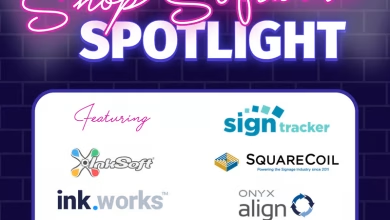Mary Louise Bennett, my maternal grandmother, taught me how to sew and knit (yes, knit) and was an amazing cook in the small West Texas town of Marfa. She met my grandfather, Jack Edwards, in nearby Alpine, Texas, the gateway to Big Bend National Park. Jack and his brother Cas came to West Texas to get into the car business, and by the 1960s they had dealerships in El Paso, Alpine, and Marfa, Texas, as well as in Ojinaga, Mexico. Cas had some early fame after he wrote a book of poetry about being a cowboy.
Marfa, almost a mile high in elevation, is in the rugged but picturesque Chihuahuan Desert of the Trans-Pecos region and is surrounded by mountains. It’s famous for several reasons. Over 75 documentaries, theatrical movies and episodic television shows have been filmed in the area, including “No Country for Old Men,” “There Will Be Blood,” and — probably the most famous — “Giant,” released in 1956.
A rugged ranching town for many generations, today Marfa is home to minimalist artists from around the world. They come to study and get their creative juices energized by the warm days, cold nights, and remote location. Some come to figure out the eerie, orb-like phenomenon of “The Marfa Lights,” which have been seen since 1883. There is even an annual festival celebrating the flickering but elusive ghost lights. I’ve seen them many times over the years, and it is fascinating to contemplate how they remain unexplained.
A cultural clash “cease-fire” with the multi-generational cattle ranchers has allowed these diverse cultures to co-exist. The popularity of being a Texas-styled artistic Santa Fe has driven up real estate prices to unprecedented levels. I’m proud to be a sixth-generation Texan, and spending years and later summers there shaped my dreams and goals, how I treat people, and eventually my entrepreneur spirit.
So, what does this remote area of West Texas have to do with the sign and graphics business, you ask? And how did I learn five life lessons about being an owner in this faraway place?
1. Lead by example
The fastest way to alienate employees is to tell them what to do instead of showing them how to do it. If you are unwilling to jump in and do the hard work or refuse to learn each facet of the business, your business will suffer. Your behavior will always outweigh your words. Inspire your team and get them to duplicate what you do.
My grandfather was legendary in how he ran his dealerships through leadership. Even though he died when I was six, he was a larger-than-life charismatic character and I wanted to dress and be just like him. He got a haircut every week and he was always impeccably dressed. He insisted on having his underwear and socks ironed. He never went anywhere without a suit and tie, his hat, and dark glasses. (He looked like a cast member of “The Godfather”) I think that is where my obsession with clothes, leather jackets, and grooming (and recently, bourbon) originated. And some OCD behavior for good measure.
My earliest memories are of ogling big GM cars with fins in his Marfa showroom and how he doted on his employees. (I’m glad the fin fad went away in the early 1960s.) He was active in the community and financed the college educations of many employees, sometimes anonymously. His relationship-building talents helped him sell lots of cars (even during the Great Depression and WWII). He and his sales team even had Hollywood celebrities continue to buy vehicles for many years. Some future actors and directors were stationed at or performed for troops during World War II in Marfa at Fort D.A. Russell (also a German prisoner of war camp) and Marfa Army Airfield, a pilot training site. This started a Hollywood love affair with Marfa that has endured to this day.
2. Duplicate yourself
I mentioned this earlier; you must learn to duplicate yourself with your team. You cannot do it all. And when it comes time to sell your company someday, you do not want to be the business. You want to be a part of its success, but only as a cog in the well-oiled processes you have developed.
When you can, hire someone just like you. As a perfectionist, I looked for talented people with passion who had similar traits as me: persistence, a good eye for details, an artistic flair, a knack for sales, and a great attitude (the saying, “hire for attitude, train for skill,” is true). It’s difficult to give up control of your business. Do not let your ego stand in the way of creating a profitable enterprise where others can help you run the day-to-day operations. Someday you will want to take more than three consecutive days off, sell or retire.
Find organized people that can do the more basic tasks that take up your time. Your goal is to work on your business, not in your business. Finding someone who can match your work ethic is a huge obstacle, especially in today’s world. Look for old souls in young bodies. These individuals can be a blessing and you will wish you could personally thank their parents or grandparents or other caregivers who instilled wisdom, aptitude, and pride in their core.
When you create written policies and procedures, you set up your business for success. Nita and I were fortunate to have worked in large companies and we ran our small business like a big firm until it actually became big. This helped us assimilate much easier once we were acquired by a larger organization because we had run like a multi-million-dollar company since early on.
Duplication is what made Colonel Harland Sanders wealthy. He took his chicken recipe and duplicated his efforts through franchising. Today, there are over 24,000 KFC outlets in more than 145 countries. That’s a lot of chicken — too much to cook by yourself.
During my summers in West Texas, I often worked on my great uncle’s ranch. Ranchers have shaped the political, social, and economic identity of Texas since the 15th century. It’s a way of life. Working cattle is not an easy life; you start early, and teamwork is fundamental when you are dealing with 300-pound calves or 2,400-pound adult males. Everyone must learn how to rope and ride a horse so well it’s instinctive. It once took ten cowboys to drive a herd of 3,000 cattle across the sparse grassland. The cowboys had to move as one and each learned to duplicate their skills to ensure each animal was inoculated, branded, and tagged and stayed with the group. It’s a ballet of sorts, and it’s beautiful to watch a team of riders bobbing and weaving and leading lots of cattle to their destination. And I learned calf fries with scrambled eggs and tortillas are what you get for breakfast.
3. Build a culture, not a business
Having a great culture is about assembling engaged people who want to come to work and who understand the core mission and values of the organization. Training is fundamental to creating a culture. Use communication to instill the behavior and expectations you want in your team. Be a mentor to your employees. Your goal is to invest in your staff with your time allocation and let them know what your plans are for the future. We did this with strategic planning each year. It helped each person feel vested in the trajectory of the company’s goals.
Work on banishing negativity. You must address negative elements head-on. Your mood and energy level will be key in setting the tone of your culture. Poor hiring choices can undermine your team’s morale and negative people can undermine man- agers and derail momentum. “Hire slow and fire fast” is sometimes the best policy. Have your core group of leaders be involved with interviewing candidates. We used to call it the “gauntlet.” Often, you will be surprised how intuitive your managers are and how they pick up on things you miss during the hiring process.
We spend a lot of time at work. Friendships emerge with your employees and encouraging social outings as a team helps solidify relationships and your family-style culture. Having fun promotes healthy interactive exchanges among your team. Always be approachable and encourage humor and a good time in the workplace. No one wants to work in a dreary and boring environment.
When I was a kid, we had a campmeeting in August each year. These started during the nineteenth century as religious revival meetings outdoors and were popularized on the southern frontier. I attended Bloys Campmeeting in the Davis mountains near Fort Davis. This multi-denominational worship meeting goes for five days and has met each year since 1890.
We looked forward to these times of fellowship, Bible study, events, play, prayer, and good food. It was a time to see old friends and make new ones. Make no mistake, going to a campmeeting is very much a culture and has been an integral part of the spiritual heritage of west Texans for many generations. Each year, we learned and bonded as a group. Lifelong relationships were created that endure to this day. We were taught fundamental truths and experienced the importance of faith in everyday life. In many ways, those experiences set us on paths that have impacted the way we make decisions, how we treat people, and what we do when no one is looking — a sure sign of character. It helped to mold many of us to be leaders. Most importantly, it taught us that culture is the bond of any successful community.
4. Be proactive and not reactive
One of the foremost success factors for my career has been proactivity. Whether it applies to sales, marketing, or any other job function you attack as an owner, this one trait can set you apart and determine your fate. It is easy to sit back and be reactive. Taking things as they come can keep you more than busy each day. That approach can engulf your time.
Owning a business takes long hours, dedication, and deliberate effort. We all have 24 hours in a day. How we use those hours and minutes can put us in the win or lose column. As I trained salespeople over the years, I tried to instill proactivity into their work ethic more than anything. It’s great if you can provide more value than the customer expects. It has been my observation that being proactive is what will set you apart from your competition.
As we tried to build our business, we had constant leads that kept us busy. It easily created 12–14-hour workdays. After some intense planning and identification, I started allocating time to call upon targeted clients whom I wasn’t currently doing business with. Some were long shots and most took weeks, months and even years of systematic engagements before we ever saw an opportunity. Eventually, a day would come when their current vendor dropped the ball, missed a delivery, or worse. By staying top-of-mind during this proactive barrage, I ensured that the customer would inevitably call me. The door opened. It might have only been a small bit, but my foot was in. And that was all it took.
Many competitors would have given up long before then. I have a heavy dose of the persistence gene, so the challenge kept me going when my rational mind was arguing with the persistent part. In some cases, it took years to get my first order with some customers. One is now one of my largest clients each year and does well over $1 million in annual sales. But if I hadn’t been proactive and started when there was nothing, they would still be someone else’s customer. So never quit, be tenacious, and go after them. It will pay big dividends.
For as long as I can remember, my mom taught me about being proactive. She was the first person in my life to read self-help books and invest in self-improvement. She was very optimistic and this imbued eternal optimism in me. She would always say, “You can be anything you want to be.” She was encouraging and never limiting. This was not a product of her Depression-era parents; they were great, loving people but not big encouragers. My grandmother’s sister Margie was the magical factor for my mom; she was a Renaissance woman who took vitamin supplements, exercised every day, and ate health food before it was popular. She showed my mom she was capable of anything. My mom went back to school to get her MBA and teaching certificate at Margie’s urging. This allowed my mom to teach at the same school for 34 years and raise two boys on her own.
Margie was also a special caregiver in my life. She did the same things for me and encouraged me to dream big and to know there were no boundaries. She taught me about birds and spent time climbing the mountain with me behind her house in Alpine. She raised African Violets, collected Reader’s Digest books, and spent quality time being a mentor to me. Her marriage was emblematic of cooperation, love, patience, and sacrifice. No one in our family saw Margie and her husband Jack share one argument or terse word in 70 years together. Margie was a ‘get it done’ individual and always on a mission. From her mouth, I heard the word ‘proactive’ for the first time. She epitomized the meaning of being proactive.
5. Be a visionary
What is a visionary? It’s someone with foresight and imagination who sees a potential outcome and can often provide the roadmap to get there. Those with both discipline and vision are rare. Sometimes they are controversial figures. They often have the unique ability to allow their minds to flow freely and unencumbered. Yet they often can bring everything together to seamlessly integrate it with the real world.
For me, I live in the future. I believe you can state clear goals, outline a strategic road map to get to the destination, and empower the individuals in your organization to help you get there. You must be a risk-taker — brainstorm, dream and be creative. And you must be a good communicator and motivator. Don’t forget to adjust your plan as needed.
The hallmark of a visionary leader is his or her ability to mobilize people towards a goal. This leadership style is defined by persuasion, charisma, and a high emotional IQ. Leaders who practice this management style can articulate a vision for the future and the path others must take to reach it.
For your business to survive and even thrive, you must have a visionary in your highest levels of management and/or ownership. They often have an uncanny way of knowing when, how, and where to catapult the company forward. They stretch everyone like Play-Doh.
Growing up in West Texas helped me become a visionary. With mountains and large vistas, you feel like you are in big sky country. You see ranchers who talk each day about when it rained last, when it’s going to rain next, or whether their cattle prices are going to hit rock bottom. Ranchers must be visionaries; they look for diversification opportunities and ways to survive each season. Some invest in other businesses to augment their cattle raising. The dry climate and many days of sunshine produce some faces that are tanned and lined like the saddles they ride. But their optimism about change and what is next keeps their teams engaged and on track. They act like anything is possible, and that is contagious.
So set the stage in your organization and be the visionary. Let your mind wander through the possibilities. Figure out the way to get where you want to go. Do, plan, and adjust. Never stop dreaming; it fuels the soul. And if you get the chance, go visit West Texas and spend some time in the cities I’ve mentioned. It will change your perspective on many levels. You might even learn a life lesson that will stick with you forever.





